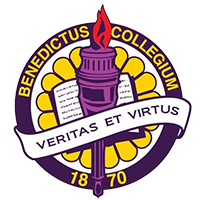By Dr. Roslyn Artis
In May, graduating seniors in the Benedict College Art Department created original works of art for an exhibit entitled “This is America”. The exhibit title is borrowed from the hit song and the accompanying music video, “This is America” by Childish Gambino (Donald Glover).
In “This is America”, Glover depicts the complicated realties of black-on-black crime, the harsh reality of systemic racism and black people who reflect a gut-wrenching self-hatred. It is shocking and forces us to engage in uncomfortable conversations about our complex existence as people of color in America. It is a mirror that reflects our reality, and, at the same time, invites us to imagine the boundless possibilities of a nation that embraces all people. It has been praised by some as a work of genius. It has also been critiqued for its gratuitous violence and indicted for normalizing black death. Whatever your opinion, it is art in its purest form – it forces you to think, to interpret, to synthesize and to feel.
Benedict students fully embraced “This is America” as an exhibit theme and seized the opportunity to create works of art that reflect their own perceptions of what it truly means to be a young, gifted, black, HBCU student in America. I was blown away by the resulting exhibit. One particular work, created by Stephanie Rosby, spoke to me in a powerful way. The piece depicts a bespectacled black girl with inquisitive eyes and unruly hair that, no doubt, was the inspiration for the artist’s title: “Blood at the Root”.
However, as an HBCU President, I saw something very different in her work. As an educator, the piece evoked images of a mind “set free” of its cage. A mind free to explore, invent, learn and grow like the unruly tendrils of the young sister’s hair. That is, after all, the role of education and, in this America, the unique role of an HBCU. We free minds that are often caged by society’s low expectations, derogatory stereotypes and unwillingness to see the potential of children whose complexions reflect a darker hue.
When I studied the work, I did not see “Blood at the Root”, I saw “I Know Why the Caged Bird Sings”. Published in 1983, “I Know Why the Caged Bird Sings” is a poem written by Maya Angelou. The poem is a metaphor for the suffering of African Americans who are not afforded the same opportunities as their white counterparts. The caged bird is characterized by its narrow cage, clipped wings and tied feet. This can be likened to a young black boy or girl who has never ventured outside of their underprivileged neighborhood (narrow cage); has been denied access to high quality primary education (clipped wings) and little encouragement or support (feet tied). When I looked at my student’s work, I saw a powerful manifestation of the work of an HBCU – we free the minds of young black birds and allow them to take flight! It is these venerable, historic institutions, we celebrate the arts and culture and allow students to express themselves freely and burst free from the cages that have been placed around their precious minds. Simply stated, HBCUs force open the cage door and set free the spirits and minds of students of color in America.
Students (birds) on HBCU campuses do not sing with a “fearful trill”. They lift their voices in celebration of their culture and their unique talents and gifts. As HBCU faculty and staff, we do not feed our birds and clean their cages, we pry open the bars and break the latches on the cage doors and release the intellectual capacity of each bird entrusted to us. Yes, I know why the caged bird sings and more importantly, I know how much louder that bird will sing if allowed to fly freely and to explore the world on his/her terms. That is the work of our nation’s Historically Black Colleges and Universities. Yes, this is America and much of the inequity and injustice and violence and fear depicted in Donald Glover’s
“This is America” is real and tangible for young people of color. However, I have hope that as long as our Historically Black Colleges and Universities are allowed to thrive, we will truly know why the caged bird, described by Maya Angelou sings – it sings because it has an opportunity to be free through the pursuit of a high quality, culturally sensitive education that accepts students for who they are and allows them to develop into who they were meant to be! “This is America” and “I Know Why the Caged Bird Sings” are works of art and literature. We still find great value in both forms of artistic expression at Benedict College and on HBCU campuses around the country. As I reflect on the work of this young artist, and countless others who graduated in May, I cannot help but feel hopeful. I am convinced by the expression of this work that we are making a difference. That the world we envision for our students is possible if our HBCUs continue to thrive. The true measure of a work of art is, after all, it’s ability to make the observer, respond, appreciate and, most of all, feel. After seeing this work, I feel more strongly than ever before that I know why the caged bird sings – it sings because on HBCU campuses, it is happy and free!




